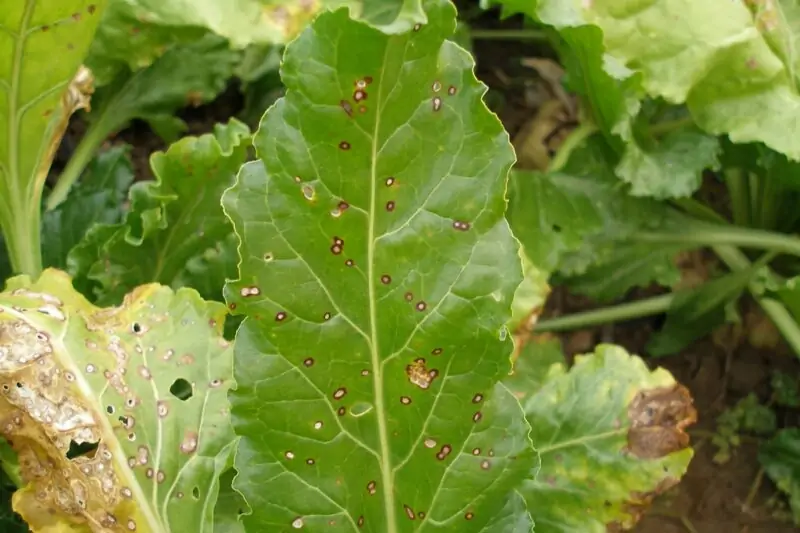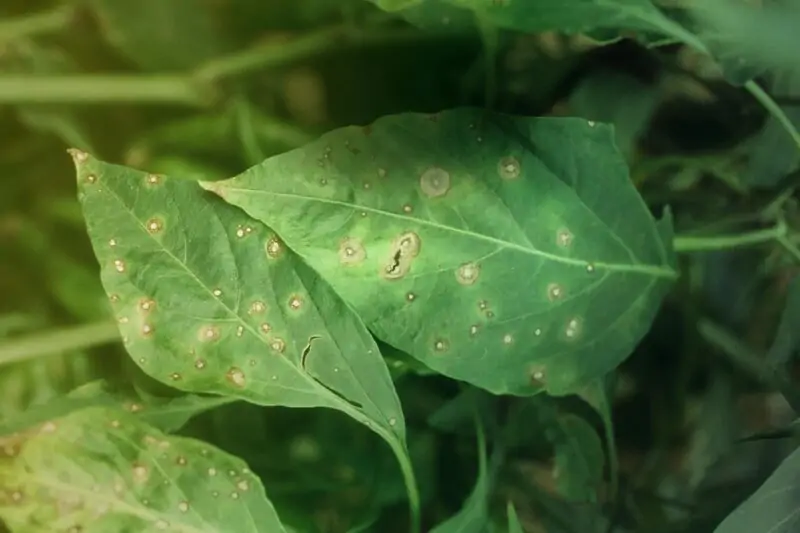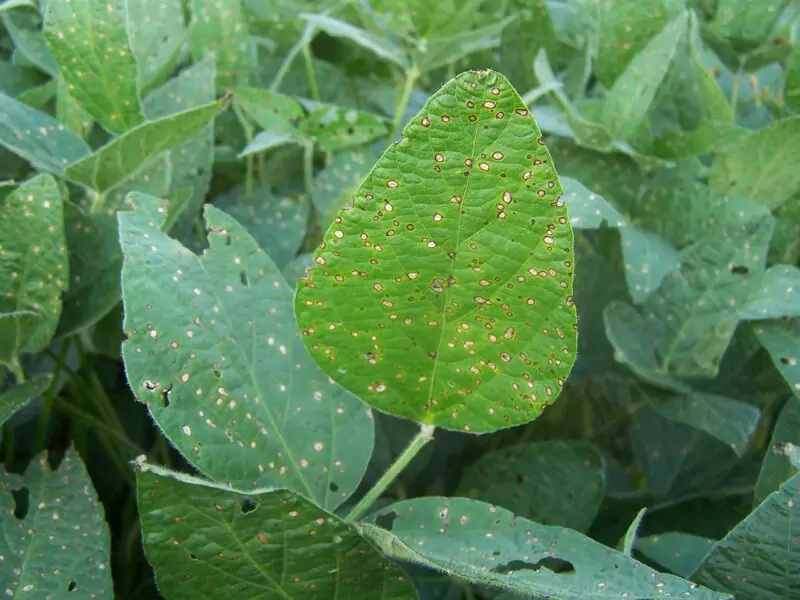Cercospora Leaf Spot and Blight: Protecting Beets and Swiss Chard from Fungus

Let’s talk about something that keeps farmers awake at night – the Cercospora leaf spot. This common disease has an outsized impact on crops, especially the ones you love like beets, and believe me, it’s no small potatoes.
Understanding Cercospora Leaf Blight
Cercospora leaf spot, a blight caused by the fungus Cercospora beticola, is a pestilent pain in the foliage of your crops. Picture your beautiful beet leaf with light brown lesions, a sad sight, right? Now imagine it spreading across your entire crop – that’s what this pesky pathogen does. The entire leaf can turn from a brilliant green into a dark muddy brown color.
The Impact of the Cercospora Leaf Spot on Crops
When the disease is severe, whole fields of sugarbeet and leafy greens can be severely affected. The fungus not only gives the infected leaves a disastrous makeover but also compromises the yield. That means fewer beetroot salads at your summer barbecues – a disaster! That’s why managing the disease is so important.
What Is the Cause of Cercospora Leaf Spot?
The Role of the Cercospora Fungus in Leaf Spot
Our culprit here is a fungus, commonly called Cercospora beticola. This mischievous pathogen hitches a ride on the wind, rain splash, and even infected crop debris to find new leaves to infect. And yes, you guessed it – it has a particular fondness for beets.
The Pathogen That Triggers Leaf Spot
The leaf spot is triggered by spores called conidia. Imagine these as microscopic evil agents, waiting for the perfect wet weather to launch their attack on unsuspecting beet crops. Many horticultural lovers have had their work undone by this menace.
What Are the Symptoms of Cercospora Leaf Spot?

Identifying Disease Symptoms in Sugar Beet, Chard, and Other Plants
Keep an eye out for small circular lesions on the leaf surface. These lesions may expand and turn into an ugly necrotic brown, often surrounded by a yellow halo. Kinda like a bad tattoo, but on your beet leaves. And it doesn’t stop there. As the disease progresses, you’ll see defoliation, petiole discoloration, and potentially, a lot of heartbreak may also occur.
How Do Environmental Conditions Influence Disease Symptoms?
Conditions are favorable for this fungal fiend when there’s high humidity, leaf wetness, and temperatures around 77°. The fungus seems to love night temperatures and overhead irrigation. So, if you notice a mix of these conditions, be on high alert. Be ready to act if symptoms occur.
How Does the Cercospora Fungus Develop and Spread?
Understanding the Life Cycle of the Cercospora Fungus
It all starts with the conidium, a spore produced by the Cercospora fungus. This spore then lands on the leaf surface and, under optimum environmental conditions – which, let’s face it, means wet and warm – starts its dastardly work. It’s not unlike a teen throwing a house party when the parents are out of town.
The Role of Environmental Conditions in the Spread of the Fungus
Remember those optimum conditions we talked about? Yeah, they’re the party invitations for these spores. When high humidity, relative humidity, and night temperatures come together, it’s a perfect storm for these spores to spread like a viral TikTok dance.
How to Manage and Control Cercospora Leaf Spot?

Techniques for Controlling Cercospora Fungi in Beets and Chard
First, avoid planting susceptible cultivars. Rotate crops and eliminate non-host weed species. Consider tillage to bury plant debris – remember, that’s one of the ways our fungal friend travels.
Organic vs Fungicide Treatment for Cercospora Leaf Spot
You can control the disease organically by removing infected plants and residue or go for heavy artillery – fungicides. Protectant fungicides can be applied when conditions are favorable for disease development. Both options have their pros and cons, so choose wisely. Depending on the level of resistance, the wrong approach could mean additional problems may also occur.
Preventive Measures to Keep Leaf Spots at Bay
Prevention is better than cure, right? Maintain a good crop rotation to avoid the disease from becoming a regular guest. Also, avoid overhead irrigation – wet leaves are like red carpets for this fungus. Regularly check your crops, especially during high temperatures and high humidity, and tackle any symptoms early.
FAQs
We’re in luck. This common disease can be managed with a combination of techniques. Timely fungicidal sprays, crop rotation, removing infected seeds, and avoiding overhead irrigation can help us kick this blight to the curb.
Well, the severity varies. In less severely affected plants, you might see just a few spots here and there. But if left unchecked, it can result in significant yield loss. It’s always best to intervene early, especially with younger leaves.
The fungus loves high humidity, wet leaves, and temperatures around 77°. So, if you’re seeing these conditions regularly, stay vigilant, and use protectant fungicides when needed.
The sugar beet plays the unwilling host in this story. The pathogen infects the beet’s leaves and uses the plant’s nutrients to produce more spores. That’s why control of Cercospora leaf spots in beets is so crucial.
Organic control methods, like removing infected plants and crop rotation, are pretty effective if done early and consistently. But in severe cases, you might need to bring out the fungicides. This will ensure no fungi survive to restart the blight once you’re done.
Conclusion
So there you have it – a deep dive into the world of Cercospora leaf spot. It’s a persistent problem, but it can be managed with knowledge and the right techniques. As always, the key is to stay vigilant, look out for those symptoms, and take quick action. With these strategies, you’ll have a fighting chance to keep your crops healthy and productive. After all, there’s nothing like a healthy beet crop, right?